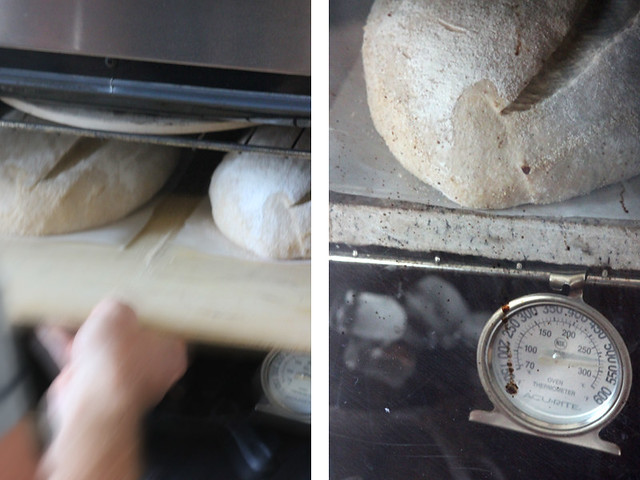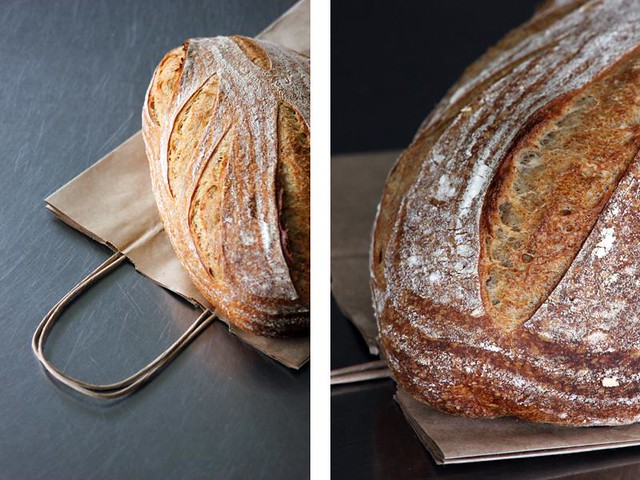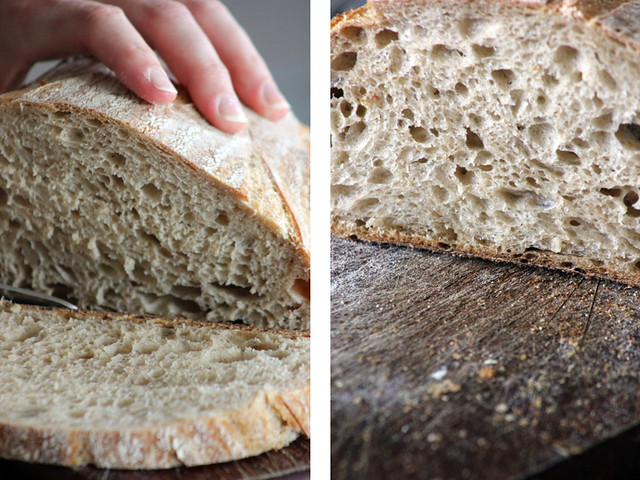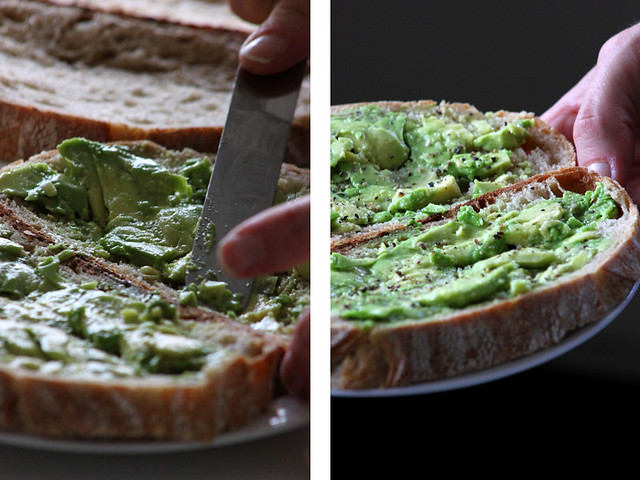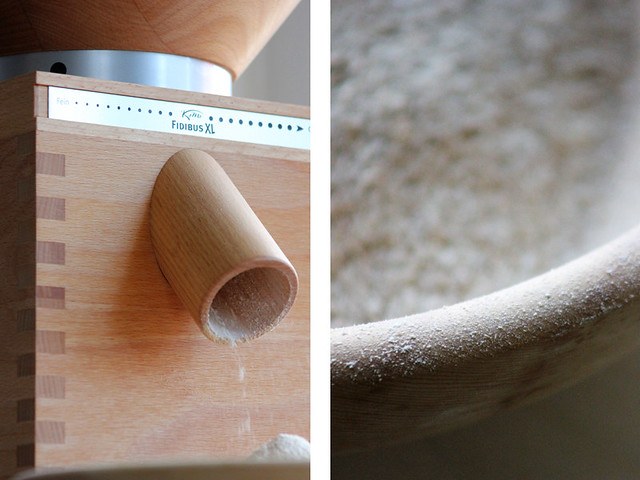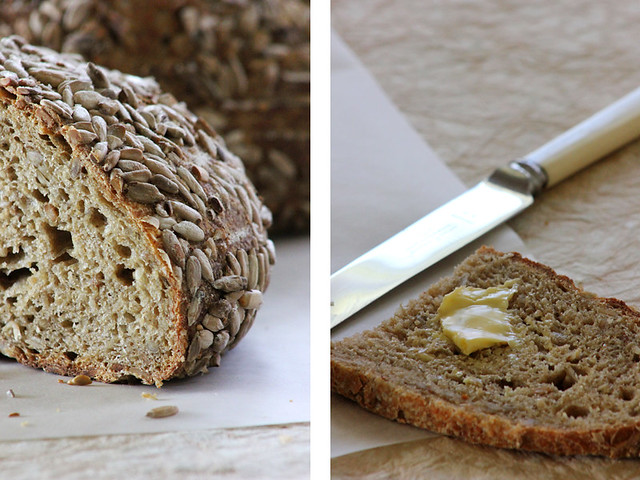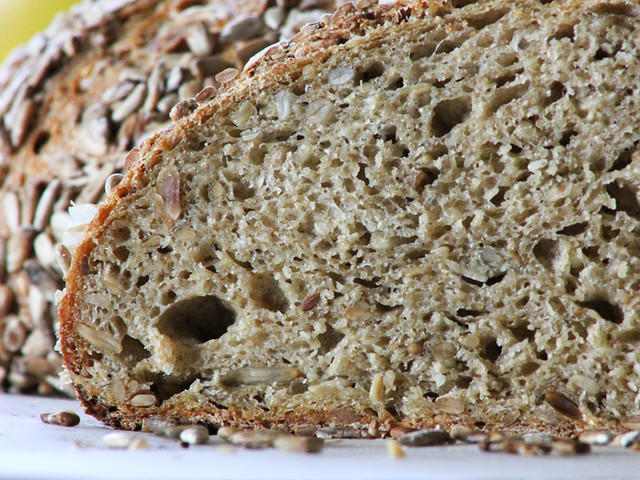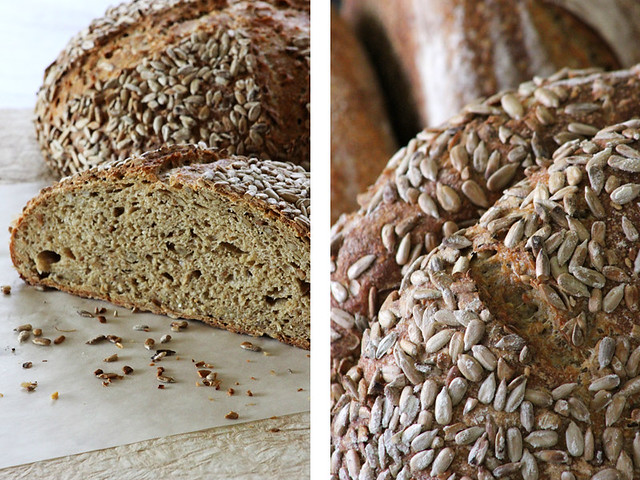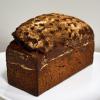Hi All,
Just want to start out by thanking both MC, and Shiao-Ping for their detailed postings and directions on making the Gérard Rubaud Miche.
Also, since so many people have tried out this method, I figured that I'd try it out too... And my hand crank grain mill arrived a few days ago, and today was a snow day, so no work...
So here is my attempt that came out of the oven earlier today. I have to say that it is the most amazing bread that I have made so far... I probably should have let the loaf age for 1 day before cutting, but I was impatient and cut into it when the internal temp almost hit 80F. I was not disappointed.
Please find the pictures and recipe below. Also, I didn't really follow MC's or Shiao-Ping's instructions on building the levain, or on mixing, etc... Lemme know what you think. Thanks.
Enjoy!
Tim





Special tools:
Small Iron Grain Mill from Lehman's as described on MC's blog about Gérard Rubaud
2 - 8" linen lined bannetons or brotforms
2 baking stones
Steam tray or method to create steam.
Ingredients:
600g AP Flour (60%)
100g Bread Flour (10%)
150g Organic Winter Hard Wheat Berries (15%)
100g Organic Spelt Berries (10%)
50g Organic Rye Berries (5%)
250g Firm Sourdough Starter @ 60-65% hydration (25%) See notes below.
750g Water (75%)
20g Kosher Salt (2%)
Total Dough Weight: Approx 2000g
Yield: 2 x 800g loaves after baking
Evening of Day 1 - Preparing the Firm Sourdough Starter
8:00pm
Ingredients below not included in above recipe.)
- Grind 25g wheat berries, 15g spelt berries, 10g rye berries with a grain mill.
- Take 100g of your firm storage starter from the refrigerator, mix with 150g AP flour, and 50g of the freshly ground wheat/spelt/rye berries, and 130g water. Cover and let rest on counter for 2-4 hours. Starter should double...
11:30pm
- Measure out all ingredients.
- Grind the wheat/spelt/rye berries.
Day 2 - Mixing Final Dough and Baking
12:00am (Midnight)
- Put water, and 250g of firm sourdough starter in large mixing bowl, place dry ingredients on top, mix with wooden spoon until all combined into shaggy dough. Knead dough in bowl using wet hands using the french fold method for 1 minute making sure to squish out any dry bits or lumps. Do not add any extra flour. Dough should be pretty smooth. Put dough into oiled plastic container, cover and let rest for 15 minutes.
12:20am
- Turn dough in plastic container using wet hands, cover, let rest 25 minutes.
12:45am
- Turn dough in plastic container using wet hands, cover, let rest 20 minutes.
1:05am
- Turn dough in plastic container using wet hands, cover, let rise overnight on counter. Go to bed.
7:30am
- Check dough to see if it has doubled in size. Also press dough with we fingertip. If impression remains, dough is ready to be divided and preshaped into 2 boules approx 1000g each. Cover with towel and let rest for 15 minutes.
7:45am
- Final shape into tight boule, then place into lightly floured banneton/brotform seam side up and place into large plastic bag so they don't dry out, and proof for 2 1/2 to 3 hrs.
9:45am
- Arrange 2 baking stones on racks in oven, one should be the 1st space from the bottom, and the next should be 2nd from the top. Arrange steam pan. Preheat 550F with convection.
10:15am
- Remove proofing baskets from plastic bag, and cover with dish towel.
10:45am
- Lightly flour the boules before turning them out onto a peel, slash as desired, place directly on baking stone. Repeat for 2nd loaf. Add 1 1/2 cups of water to your steam pan, close oven door. Turn oven down to 450F with covection and bake for 25 minutes. After the 1st 25 minutes, rotate the loaves between the stones and bake for another 25 minutes with convection at 425F. Loaves are done when the internal temp reaches 205F to 210F.
11:45am - Take loaves out of oven and cool for 3-4 hours or until internal temp is 80F. Loaves should weigh approx 800g after baking.
Notes: for the AP flour, I mixed Whole Foods 365 AP, and Gold Medal Unbleached AP. The bread flour is King Arthur. The organic whole grains are from Fairway Market in NYC. The grinder is really cool! Hard wheat is hard to grind. Spelt is easy, and rye is about as hard as hard wheat...
Submitted to Yeastspotting on 2/11/10
















